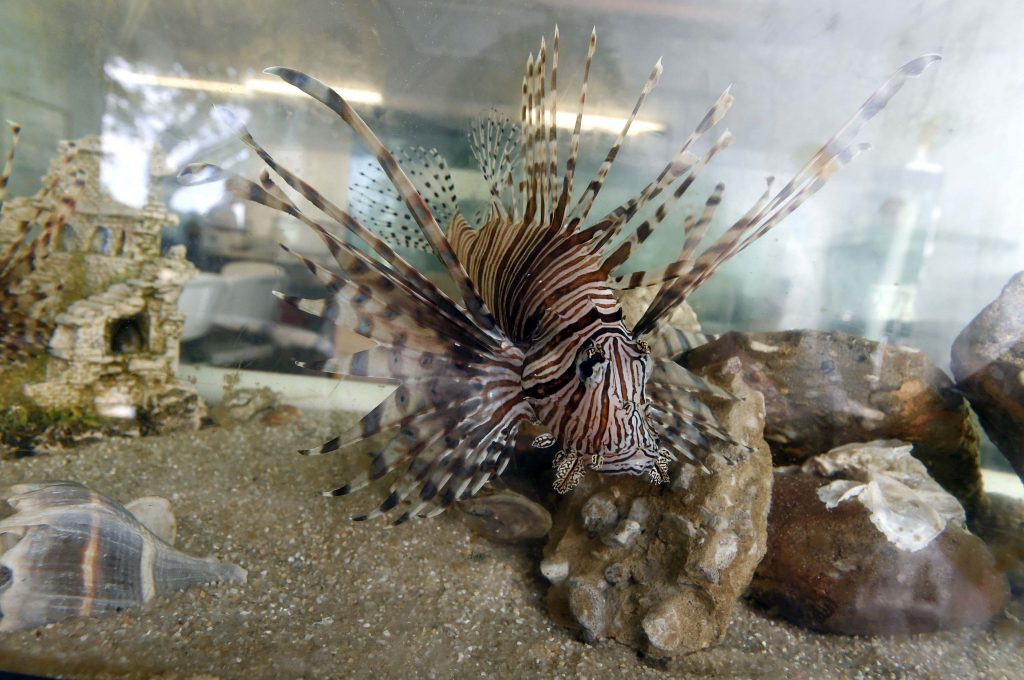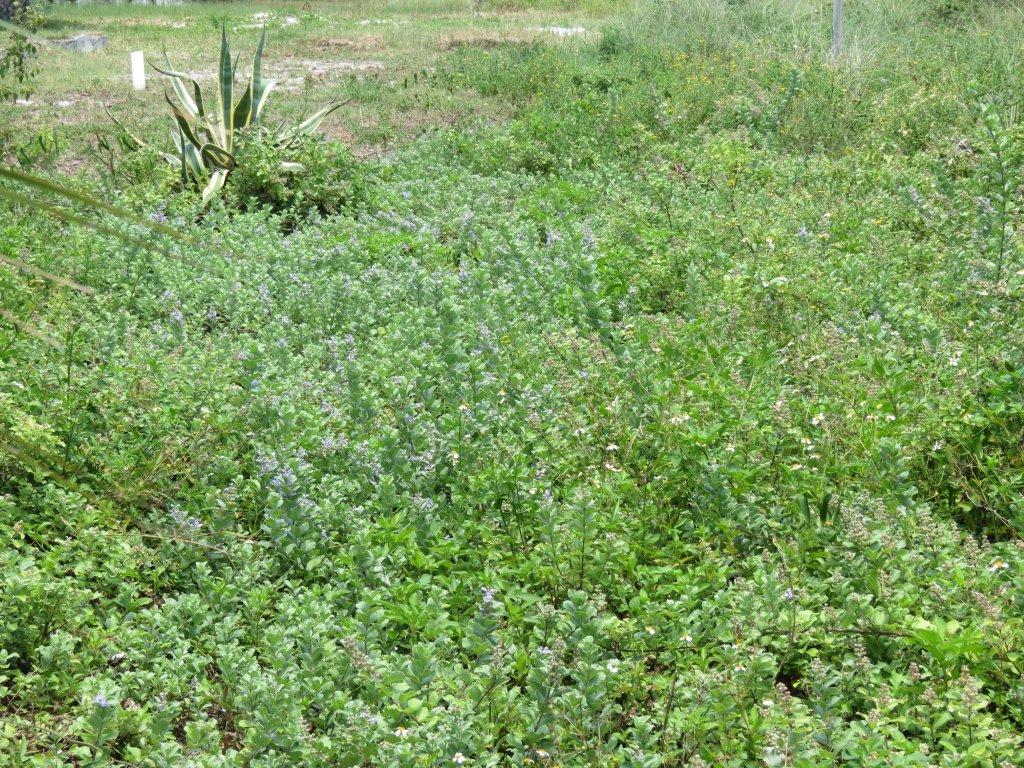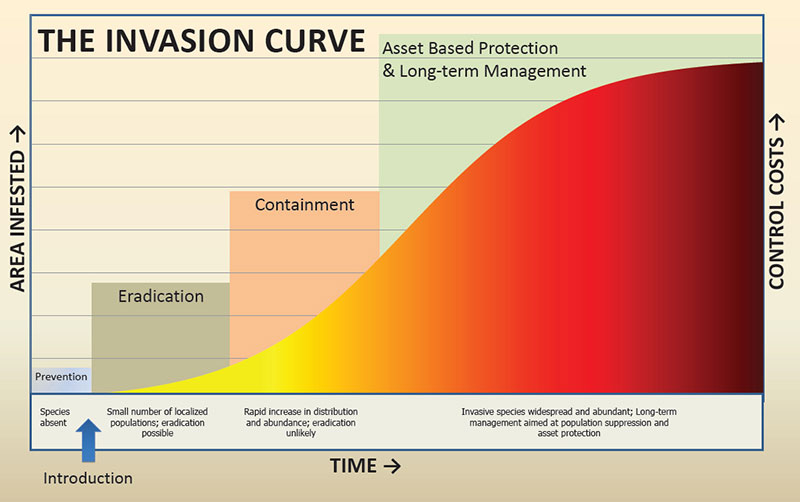I recently attended an invasive species conference, and this topic came up. It seems strange that it would but those who work in the invasive species world have this in the back of our heads a lot. I mean in a lot of cases we do not bring the word up when making presentations, what some call “the E word”, because we feel in the back of our heads, we will never eradicate them, and we should not lead people on that we might. Lionfish management is a good example. Everyone is aware that eradication is probably not an option and so we refrain from using the term when discussing this species.

It came back a few years ago when I began working with beach vitex on Pensacola Beach. It was a relatively new species on the radar in Florida and was not even listed as an invasive species in our state. When we first heard about it in the Pensacola area, I checked EDDMapS to see how many records there were. There was a total of three statewide; two in the Jacksonville area and one in Pensacola. I conducted surveys of Pensacola Beach and found 22 additional sites where the plant existed and thought – MAYBE… if this truly ALL there was – we MIGHT eradicate this plant from the Florida panhandle. There was a point after we had treated and removed the plants from those sites that we MIGHT have actually… dare I say it… eradicated beach vitex from Pensacola Beach. I felt pretty good about stating this and there was even a little ceremony at a meeting to celebrated it. Then… we found some on the north side of the Intracoastal Waterway in Gulf Breeze. Then the plant popped in Navarre. Then Perdido Key. Then in Apalachicola. And after a few years, the plant popped up again on Pensacola Beach. We were too quick to use the term eradication and – like so many who try to manage these species – have refrained from using the term ever since.
As I watched what was happening with beach vitex, watching what was happening with the brown anole, Chinese tallow, and what I saw in south Florida with Brazilian Pepper, I could see why many felt eradication is not part of the program. I could see why most would immediately go into management mode and just skip the idea of eradication. I could see why many would toss in the towel and find something else to work on.

On the second day of the three-day conference the keynote speaker was Dr. Dan Simberloff. Dr. Simberloff has been working with invasive species management since the late 1960s. His talk was entitled Managing Invasions: What’s Worked, What Hasn’t, and What Might. Early in his talk he asked a question… “What is our ultimate goal?”. There was silence in the room for almost a minute. Everyone was pondering. In my head I was thinking “to control the species distribution as best we could and stop the introduction of anymore”. But that was not the answer he was looking for. After about a minute (because NO one responded 😊) he said – “our ultimate goal is eradication”.
Again, there was silence. He used the “E” word – out loud – in front of everyone. I am guessing others were thinking what I was thinking. “I didn’t think eradication was really possible?” But his argument was that it is possible and began to run down a list of situations where it in fact HAS happened. He also discussed new technologies that COULD allow for more.
It was good to hear this honestly. It felt like a locker room pep talk at half time and you are down by two touchdowns. Your thought is that the other team has this in the box, and we should play for another half but really be thinking about how we are going to improve for the next game, so we are not in this situation. Then “Coach Simberloff” gives his locker room talk, you go back on the field, and things turn around – you come from behind and win the game. He made us feel like it was possible. That we are out their fighting now but not to lose focus of the ultimate goal.
I began to think about the beach vitex situation in the Florida panhandle again. Maybe… just maybe…
But here’s the deal. If you look at the invasive species curve (image provided here) you will see that your best chance at eradicating an invasive species is early in the invasion. What people have termed EARLY DETECTION – RAPID RESPONSE (EDRR). In my head, I think we MAY be there with beach vitex. I do not feel the populations in the panhandle are beyond the level that eradication may now be actually achievable. IF we know where all of the plants are. In the back of my head, I still wonder if we have missed more than there is and that the populations may be further up the curve than we think. BUT let’s look at this way – maybe we DO know where most of those plants are.

The state is divided into regional management areas (CISMAS) and the western panhandle is part of the Six Rivers CISMA. During the COVID period of 2020-2021, we developed a EDRR list for this CISMA and it is posted on our webpage (https://www.floridainvasives.org/sixrivers/). Being a Sea Grant Extension Agent, my focus is on the coast. The barrier islands and the waters that surround them. We do have a few EDRR species that are popping up on, and around, our islands. Have we detected them soon enough? I am not sure but over the next few weeks I am going to post articles here to discuss some of them in hopes that the public will assist us in finding, reporting, and managing them. The ultimate goal is eradication. Let’s see if we can pull this off.
- Our Environment: Part 11 – We Need Water - July 7, 2025
- Our Environment: Part 10 – Improving Agriculture - June 20, 2025
- Marine Creatures of the Northern Gulf – Snails and Slugs - June 20, 2025
